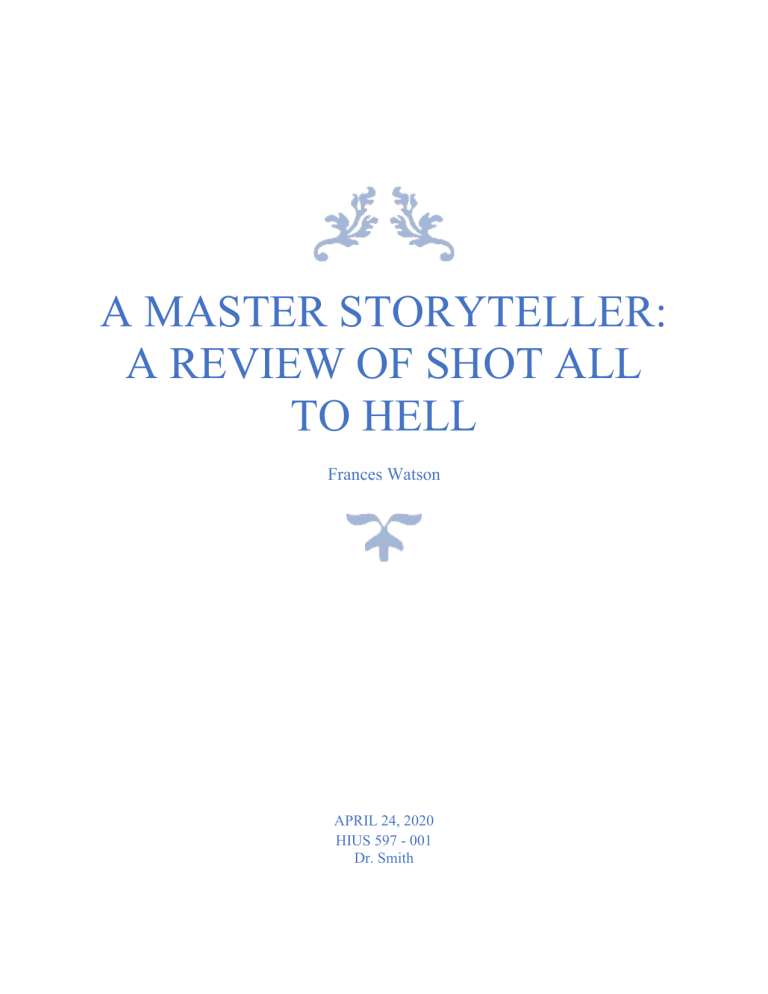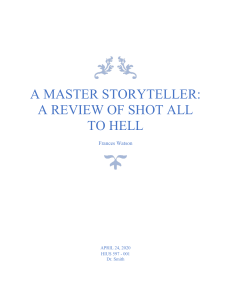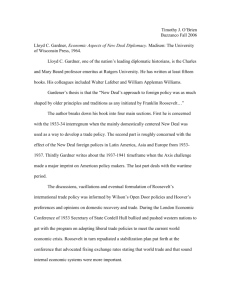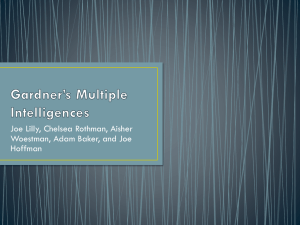
A MASTER STORYTELLER: A REVIEW OF SHOT ALL TO HELL Frances Watson APRIL 24, 2020 HIUS 597 - 001 Dr. Smith 1 Even the best of stories can fall flat if not told well. Thankfully, a story can also be exalted to new heights in the hands of a true storyteller. With all the books on Jesse James and the JamesYounger gang, it seems that writing another book on the topic would be beating a dead horse. However, in Shot All to Hell: Jesse James, The Northfield Raid, and the Wild West’s Greatest Escape, Mark Lee Gardner manages to tell the same story with a fresh, journalistic feel, he breathes new life into the narrative with recently discovered primary sources, and he paints a picture of the true west. Perhaps because of Gardner’s experience as a journalist or his work writing about the west, he makes Shot All to Hell is historical, but also an intensely exciting read. Few scholarly or popular histories open their first chapter with a train robbery in progress (4-5). Plus, Gardner’s writing places the reader in the center of the action. This writing style pairs perfectly with a historical narrative that already embodies many traditional western elements such as shoot-outs, train robberies, and “heroes” versus “villians.” Another highlight of the book is the newly discovered or lesser-known primary sources that Gardner uses to fill in gaps in the narrative. For example, since the James brothers fled separately from the rest of the gang after the botched Northfield robbery and they did not discuss their exploits during this time, there is an area where the historical narrative cuts off. Using a “previously unknown” account of Dr. Mosher’s encounter with the James brothers from the Sedalia Weekly Bazoo, Gardner adds a fascinating up-close look at the James boys on the run (284). Not only does this account add to the historical narrative, but it also provides a description of the character of the James brothers under pressure. According to Dr. Mosher, the boys were quite pleasant after their initial suspicion was sated (189-191). The brothers were willing to feed 2 the doctor and they were “chatting pleasantly” with him (191). Primary source additions like this one add depth to Gardner’s historical narrative. In addition to the compelling and accurate writing, Gardner tells the story without a filter. Rather, Gardner provides an authentic feel of the true nitty-gritty nature of the west. This broadens the focus of the book beyond merely the James-Younger gang. Gardner uses his narrative to provide his readers with a well-researched, image of what western law enforcement was honestly like. He points out that the perfect image depicted of law enforcement in many westerns is completely off because while the posse after the James-Younger gang was certainly persistent, they still made missteps and ran into unavoidable problems. One such instance occurred when one posse stumbled upon the James brothers as they crossed the Big Sioux. They had a perfect chance to catch the two criminals but errors on their part (not staying together, the men in the led being unarmed) led to retreat and the need for reinforcements which gave the James boys a head start (186). Then, the unavoidable issue of rain meant that tracking them was rendered impossible (186). Gardner excels at writing about the west the way it actually was. Overall, Gardner blends exquisite writing and scholarly research to create an authentic historical picture in Shot all to Hell. Regardless of the books about Jesse James that may have come before, this particular work stands on its own as a solid and vivid account of the JamesYounger gang’s activities. This is one of those rare historical books that make a person want to reread them just for fun. Reference List: Gardner, Mark Lee. Shot All to Hell: Jesse James, The Northfield Raid, and the Wild West’s Greatest Escape. HarperCollins Publishers, 2013.



